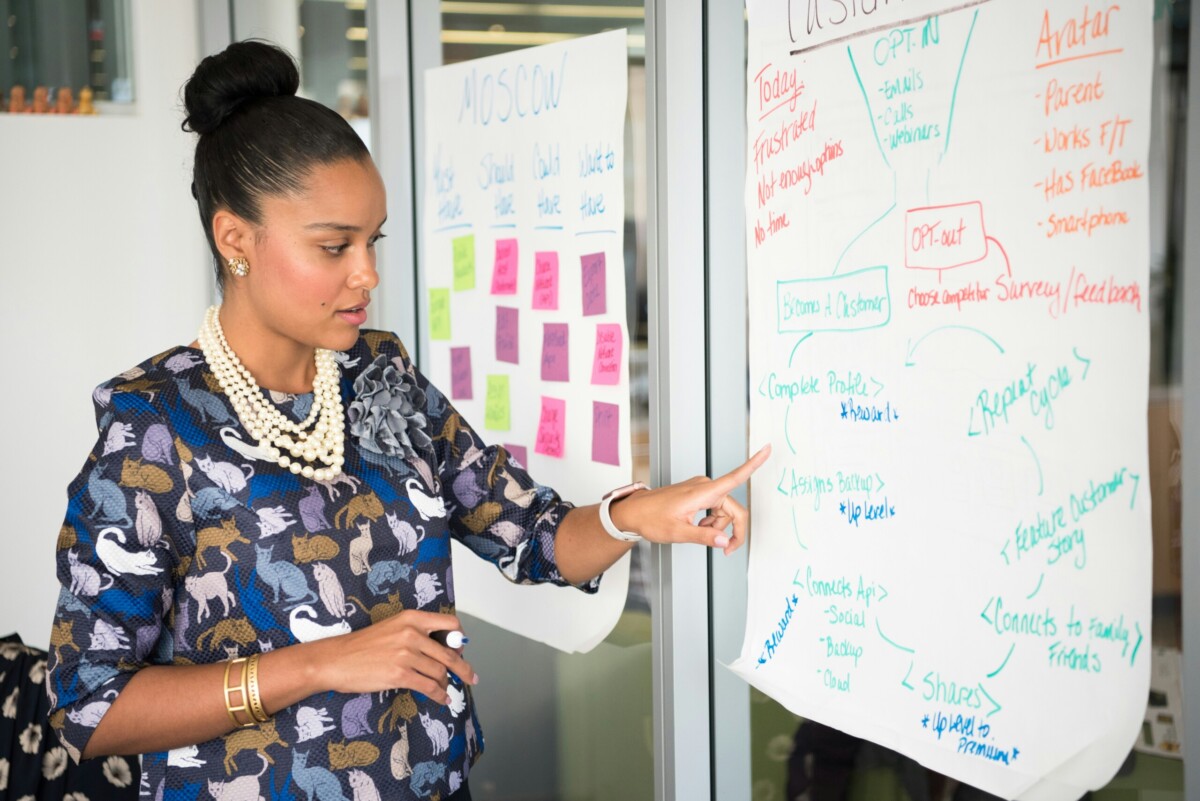At RNL’s recent Graduate and Online Innovation Summit, I had the chance to sit down with Stephen Drew, RNL’s Chief AI Officer, for a wide-ranging conversation on how AI is going to change how we do and what we do in higher education. Stephen and RNL’s AI development team are hard at work getting ready to launch RNL’s first AI-driven solutions in May of 2024, but he was happy to sit down to cover topics ranging from the highest level like “what is AI?” to “Why won’t we solve today’s challenges without AI?” (a question that Steve astutely reframed for me) and on to “How does AI help institutions engage today’s students who expect instantaneous and personalized responses?” and “What will come next for AI in higher education?”
You can watch the entire video below or read portions of our conversation (edited for reading).
What is AI?
I prepared this response because it is a question that comes up often, and it’s not as easy as one would think to answer. So, I’m going to go with the legal definition of artificial intelligence according to the US code, which is pretty decent. AI is defined as machine-based systems that can, for a given set of human defined objectives make predictions, recommendations or decisions that influence real or virtual environments.
We are all constantly experiencing AI based solutions, recommendation systems, predictive models that kind of guess what we’re typing in a search box in Google or conversational assistant like Siri or Alexa that answer our questions. With all of this, we all come into conversations in our work lives with our own understandings of what AI is.
Why won’t we solve today’s challenges without AI?
AI is not the solution, or at least not the sole solution, to solving any particular challenge. Perhaps a better question is, “how can we use AI (generative models, predictive models, conversational systems, etc.) to help solve our challenges better?”
This is really the focus of our AI work at RNL. I have been spending a lot of time with our partners over the past few months and I’m getting a sense of the types of challenges that they are facing. I am hearing about a lack of resources and an incredible level of pressure to achieve difficult goals. These pressures are compounded by dwindling populations, affecting both fundraising and enrollment, that are increasing the competitive environment.
So, speed, efficiency, and accuracy are all incredibly important. AI offers great promise because it allows us to make better predictions, and to get insights into data faster, and to engage in different ways. Perhaps most importantly, it can also create a more personalized and relevant experience for the stakeholder that we’re engaging with whether that be a student, their parent, an alum, or a donor.
These are the areas where RNL is going lead significant advances to really tie into that combination of appropriate knowledge of the of the individual (derived from the work we do with our partners), and the amazing predictive powers of AI models and the conversational powers of generative AI models where we can engage students and donors in a way that becomes much more meaningful and ultimately results in reducing the pressures on our partners.
How does AI help institutions engage today’s students who expect instantaneous and personalized response?
I want to start by using a word that might cause a bit of “post-traumatic stress disorder” for many people, and that’s chatbot. Bots have been around for a long time, and most of them are horrible. Most people can point to examples of failed attempts to create a conversational experience that answers questions and then guides you towards a self-service action. They rarely got your question answered or to effectively got you to the resource needed to solve the problem.
Until about two years ago it was very difficult to accurately associate spoken or typed word with “intent.” These early models were created by building natural language models that attempted to predict all the variations of things people might say. This was done by recording interactions and transcribing them and then building the models that ultimately were meant to allow the bot to answer basic questions like “check the status of my application.”
The last two years have brought a lot of progress. Today we are building conversational experiences that combine the best features of large language models (LLM) like Chat GPT and their full capabilities, which allow the LLM to take an input and then say “oh, it’s about this or that.” We then combine that with a good framework for performing actions and the result is the ability to have conversations about topics that we haven’t necessarily pre-programmed into a database.
Let’s think of these new offerings as Digital Assistants, instead of ChatBot 2.0. With today’s AI-driven digital assistants, you can provide a very large amount of unstructured data as training data and then allow the system to carry out a conversation about that data in a very natural way. The best digital assistants also allow for “context” within the conversation, allowing for an even more human-like conversation. This allows the digital assistant to respond to questions like “tell me more about that…” in the course of providing an answer to the original query.
So, to bring this back to the expectations of today’s students for instantaneous personalized experiences, the digital assistant is an important emerging tool to win the student before some other institution does.
What are the next steps in applying AI to the enrollment process?
The next step could be to create an automated assistant that could streamline the entire enrollment process – from inquiry to enrollment. Imagine if we could load an internal version of the digital assistant with all the information needed for it to create a customized – program-specific – communications flow for every prospective student that provides answers to their specific questions.
In the not too distant future, we will be able to combine inputs from a potential student – questions, conversations, comments – and use these inputs to provide both direct answers but also infer other things that will be important to their enrollment journey to build a customized personalized (ongoing) conversation. Further, we could use things like their resume or transcript, etc. to match them to the right programs. We could even use these inputs to offer conditional acceptance, all in a fully, digital conversational manner.
More to come next month
Next month’s blog will present the second half of our conversation with Steve, including:
- What is responsible AI and how is RNL applying it to all that it does?
- How can AI help enrollment managers analyze their data and uncover strategies to meet their enrollment goals?
- How can predictive analytics and other AI tools help increase the quality of online courses and programs?
#Solving #Todays #Enrollment #Challenges








